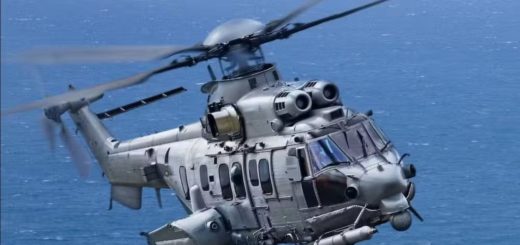After Thailand’s Gripen’s combat mission, questions of future sales
STOCKHOLM – The Royal Thai Air Force (RTAF) has confirmed that Saab Gripen fighter aircraft were used against Cambodia over the weekend, marking the first-known weapons launch in combat from the Swedish jet.
But Thailand’s air strikes – which now appear to be on pause following a Monday ceasefire announcement – come at an awkward time for Sweden and Saab, as Thailand is in the middle of negotiations for a new tranche of Gripens to grow their fleet of 11 C/D Gripens. And in comments to Breaking Defense on Monday, Sweden’s foreign minister would not commit to approving Thailand’s new buy.
The conflict between Thailand and Cambodia exploded on Friday, leading to an exchange of fire from both sides. The strikes, Thailand has claimed, were on military targets “that posed threats to Thailand’s national security,” and were carried out in full compliance with international law and the nation’s right to self-defense under the UN Charter, spokesperson Air Marshal Prapas Sornchaidee stated on Facebook.
According to previous media reports, the Gripens, alongside F-16s, conducted precision airstrikes using GBU-12 laser-guided bombs on Cambodian artillery and ground targets near the border.
As far as is publicly known, the Saab JAS 39 Gripen has now seen its first combat use since the first generation’s test flight 37 years ago in 1988. Previously, it was used only for reconnaissance and similar missions, such as Sweden’s NATO operation in Libya in 2011 and NATO air policing missions.
The question now is whether Thailand’s use of the jets might impact Saab’s next sale.
In June 2025, Thailand announced plans to purchase 12 E/F Gripens, with orders expected soon. The Swedish parliament, Riksdagen, has given the government authority to enter into an agreement with Thailand on up to 12 new Gripens and additional air defense systems, but the contract is not signed yet.
That export deal must be approved by the government, with a number of bureaucratic hoops to jump through. The Minister of Foreign Affairs, Maria Malmer Stenergard, is the ultimate authority, through her agency’s Department for Disarmament and Non-Proliferation and the state agency Inspectorate of Strategic Products (ISP).
And notably, Stenergard would not commit to approving Thailand’s new buy when asked by Breaking Defense Monday. The government “is closely monitoring developments in the border conflict,” she stated.
According to the Swedish export control regulations, it is the ISP that assesses matters concerning export licenses for military equipment before the government makes a formal decision.
Defense Minister Pål Jonson’s acting spokesperson told Breaking Defense that this is a matter for the Foreign Minister to address.
“It is of the utmost importance that international law, including international humanitarian law, is respected and that all parties work toward de-escalation, dialogue, and a peaceful resolution of the conflict,” the MFA’s spokesperson said in a follow-up statement to Breaking Defense on Tuesday, after Thailand’s confirmation of using Gripen in combat
Outside of Thailand, Sweden, South Africa, Brazil, Hungary, and the Czech Republic all currently operate Saab JAS 39 Gripens. The E/F model is also under consideration by Colombia and Peru.
Thailand also operates Saab’s Erieye airborne surveillance systems “that gives Thai command authorities full situational awareness across the entire nation,” according to a previous Saab news release. The company has been active in Thailand since the mid-1980s and previously said “Thailand stands out as one of Saab’s most significant customers.”
Thailand and Cambodia appear to have halted hostilities, which raised eyebrows in the Gripen’s homeland of Sweden.






